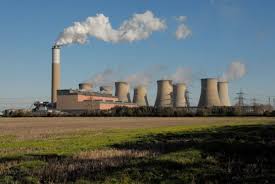Cottam Power Station: Key Developments and Future Prospects

Introduction
The Cottam Power Station, located in Nottinghamshire, has been a significant player in the UK’s energy landscape since its establishment in the late 1960s. As the world transitions towards cleaner energy sources, the future of coal-fired power stations like Cottam is under scrutiny. Understanding its current status, recent developments, and implications for energy policy is essential.
Recent Developments at Cottam Power Station
As of 2023, Cottam Power Station has ceased operations, following the UK government’s phased approach to closing coal-fired power plants to meet its net-zero emissions targets by 2050. The facility, which was primarily used for generating electricity through burning coal, was one of the last operational coal-fired plants in England. With its closure announced in early 2022, Cottam officially concluded its operations in September 2023, marking the end of an era for traditional energy generation in the UK.
Owner Uniper, a German energy company, is now focused on decommissioning the site. The transition away from coal at Cottam has paved the way for potential redevelopment into renewable energy projects, which could attract investment and create jobs in the region. Local authorities and energy experts are actively exploring various options, including wind and solar energy farms, to leverage the existing infrastructure and grid connections.
The Broader Impact of Cottam’s Closure
The retirement of Cottam Power Station aligns with the UK’s broader commitment to reducing carbon emissions and promoting clean energy. The UK government has set ambitious targets within its 10-Point Plan for a Green Industrial Revolution, which aims to support the growth of renewables, enhance energy efficiency, and drive green innovations across the economy.
Moreover, the Cottam site’s closure and potential redevelopment is significant for the local community and the environment. While the transition may raise concerns about job losses in the short term, the anticipated shift towards renewable energy projects could provide new employment opportunities and stimulate local economic growth in the long term.
Conclusion
The closure of Cottam Power Station signifies a critical juncture for the UK’s energy transition. As coal-fired power plants are retired in favour of renewable energy sources, the focus now shifts to how these sites can be repurposed for a sustainable future. The decisions made in the coming months regarding Cottam’s redevelopment will likely serve as a model for other similar facilities across the country. The situation is one to watch as the UK works towards fulfilling its climate goals while balancing economic and social needs.









